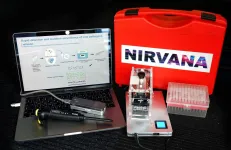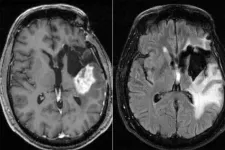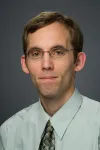(Press-News.org) LA JOLLA--(March 31, 2021) Clinicians using a new viral screening test can not only diagnose COVID-19 in a matter of minutes with a portable, pocket-sized machine, but can also simultaneously test for other viruses--like influenza--that might be mistaken for the coronavirus. At the same time, they can sequence the virus, providing valuable information on the spread of COVID-19 mutations and variants. The new test, dubbed NIRVANA, was described online today by a multi-institution team of scientists in the journal Med.
"This is a virus detection and surveillance method that doesn't require an expensive infrastructure like other approaches," says Juan Carlos Izpisua Belmonte, co-corresponding author and a professor in Salk's Gene Expression Laboratory. "We can accomplish with one portable test the same thing that others are using two or three different tests, with different machines, to do."
Around the world, more than 100 million people have been infected with SARS-CoV-2, the virus that causes COVID-19. A staggering 500,000 Americans have died from COVID-19 to date. Testing the population is key to stopping the spread of the virus. In addition, tracking the spread of new SARS-CoV-2 variants--some of which could respond differently to treatments or vaccines--is critical.
Today, the standard approach to determining whether a nasal swab is positive for COVID-19 is to run a polymerase chain reaction (PCR) test to detect genetic material from the SARS-CoV-2 virus. If the sample is negative, however, patients and clinicians don't get any information on what might be causing the coronavirus-like symptoms--unless they run separate PCR tests, using different swab samples, for other viruses. And if the sample is positive for SARS-CoV-2, they don't learn which COVID-19 variant a patient is infected with unless another set of tests is run; those require a large and expensive next-generation gene-sequencing machine.
Last summer, Mo Li, an assistant professor of bioscience at King Abdullah University of Science and Technology in Saudi Arabia, was pondering ways he could lend his expertise in genetic engineering and nanopore sequencing to combatting the COVID-19 pandemic. Li, who previously spent six years as a Salk postdoctoral researcher in the Izpisua Belmonte lab, wondered whether a gene-detection approach called isothermal recombinase polymerase amplification (RPA) coupled with real-time nanopore sequencing might be more useful--and faster, cheaper and more portable--than the current COVID-19 testing approach. He teamed up with Izpisua Belmonte to find out.
Unlike PCR, which cycles through lower and higher temperatures to separate DNA strands and copy them, RPA uses proteins--rather than temperature changes--to accomplish the same thing in only 20 minutes. The technology lets researchers copy longer stretches of DNA, and probe for multiple genes at the same time.
"We quickly realized that we could use this technique to not only detect SARS-CoV-2, but other viruses at the same time," says Li.
In the new paper, Li and Izpisua Belmonte describe a small, portable device that can screen 96 samples at the same time using the RPA assay. They call the method NIRVANA, for "nanopore sequencing of isothermal rapid viral amplification for near real-time analysis."
The scientists designed NIRVANA to simultaneously test samples for COVID-19, influenza A, human adenovirus, and non-SARS-CoV-2 human coronavirus. In just 15 minutes, the researchers report, the device begins to report positive and negative results. And within three hours, the device finalizes results on all 96 samples--including the sequences of five regions of SARS-CoV-2 that are particularly prone to accumulate mutations leading to new variants such as the B.1.1.7 variant identified in the UK.
Li and Izpisua Belmonte tested NIRVANA on 10 samples known to be positive for SARS-CoV-2, 60 samples of unknown SARS-CoV-2 status, as well as samples of municipal wastewater harboring the SARS-COV-2 virus and others. In all cases, the assay was able to correctly identify which viruses were present. The sequencing data also allowed them to narrow down the origin of SARS-CoV-2 in positive samples; differentiating strains from China and Europe, for instance.
"The design of this assay is really flexible, so it's not just limited to the examples we've shown," says Li. "We can easily adapt it to tackle another pathogen, even something new and emergent."
With the small size and portability of the NIRVANA workflow, it could be used for fast virus detection at schools, airports or ports, the researchers say. It also could be used to monitor wastewater or streams for the presence of new viruses.
"The pandemic has provided two important lessons: first, test widely and quickly, and second, know your variants. Our NIRVANA method provides a promising solution to these two challenges not only for the current pandemic but also for possible future ones," says Izpisua Belmonte, who holds the Roger Guillemin Chair at Salk. Market analysis would be required to determine whether the initial cost of commercialization--and the constant tweaks to the test needed to make sure it detected new variants or new viruses of interest--are worth it, Belmonte adds.
INFORMATION:
In addition to Izpisua Belmonte and Li, other authors on the study were Concepcion Rodriguez Esteban of Salk; Chongwei Bi, Gerargo Ramos-Mandujano, Sharis Hala, Jinna Xu, Sara Mfarrej, Yeteng Tian and Arnab Pain of King Abdullah University of Science and Technology (KAUST); Estrella Nunez Delicado of UCAM Universidad Católica San Antonio de Murcia; Fadwa Alofi of King Fahad Hospital; Asim Khogeer of Saudi Arabia's Ministry of Health; Anwar Hashem of King Abdulaziz University; and Naif Almontashiri of Taibah University.
The work described in the current paper was supported by a competitive research grant from the King Abdullah University of Science and Technology.
About the Salk Institute for Biological Studies:
Every cure has a starting point. The Salk Institute embodies Jonas Salk's mission to dare to make dreams into reality. Its internationally renowned and award-winning scientists explore the very foundations of life, seeking new understandings in neuroscience, genetics, immunology, plant biology and more. The Institute is an independent nonprofit organization and architectural landmark: small by choice, intimate by nature and fearless in the face of any challenge. Be it cancer or Alzheimer's, aging or diabetes, Salk is where cures begin. Learn more at: salk.edu.
AURORA, Colo. (March 31, 2021) - A new study published in Frontiers in Psychiatry finds that patients with Obsessive Compulsive Disorder (OCD) as well as other psychiatric comorbidities, such as autism spectrum or tic disorders, may respond well to Deep Brain Stimulation (DBS).
DBS is a minimally invasive neurosurgical procedure that uses coordinates to target certain areas of the brain, implanting electrodes that can help regulate abnormal brain activity. DBS procedures are rare for OCD in the United States; only a couple hundred patients have received this treatment for OCD management since its FDA approval ...
An aggressive type of brain cancer, glioblastoma has no cure. Patients survive an average of 15 months after diagnosis, with fewer than 10% of patients surviving longer than five years. While researchers are investigating potential new therapies via ongoing clinical trials, a new study from Washington University in St. Louis suggests that a minor adjustment to the current standard treatment -- giving chemotherapy in the morning rather than the evening -- could add a few months to patients' survival.
The study appears online in the journal Neuro-Oncology Advances.
Average overall survival ...
AURORA, Colo. (March 30, 2021 - Researchers at the University of Colorado College of Nursing have found that nearly one-quarter of graduate nursing students have reported elevated levels of stress, anxiety and depression, compounded in the past year by the COVID-19 pandemic.
Study findings, published recently in END ...
A new invention that uses sunlight to drive water purification could help solve the problem of providing clean water off the grid.
The device resembles a large sponge that soaks up water but leaves contaminants - like lead, oil and pathogens - behind. To collect the purified water from the sponge, one simply places it in sunlight. The researchers described the device in a paper published this week in the journal Advanced Materials.
The inspiration for the device came from the pufferfish, a species that takes in water to swell its body when threatened, and then releases water when danger passes, said the device's co-inventor END ...
When it comes to powering mobile robots, batteries present a problematic paradox: the more energy they contain, the more they weigh, and thus the more energy the robot needs to move. Energy harvesters, like solar panels, might work for some applications, but they don't deliver power quickly or consistently enough for sustained travel.
James Pikul, assistant professor in Penn Engineering's Department of Mechanical Engineering and Applied Mechanics, is developing robot-powering technology that has the best of both worlds. His environmentally controlled voltage source, or ECVS, works like a battery, in that the energy is produced by repeatedly breaking ...
In looking at the broader impact of the COVID-19 pandemic on health and wellbeing, public health experts are examining screening rates for cancer. A new study looking at U.S. mammography screening rates during the first five months of the pandemic found both a strong rebound in breast cancer screening rates and a concerning cumulative deficit in mammograms due to missed appointments, as well as uncovering disparities when looking at screening according to race.
The study was released this week in the Journal of the National Cancer Institute.
Conducted by investigators from the Breast Cancer Surveillance Coalition (BCSC), a federally-funded, national network of breast imaging registries, the study sought to quantify the impact of the COVID-19 ...
Denver, CO, March 31, 2020 - Children with Down syndrome are 20-times more likely to develop acute lymphocytic leukemia (ALL) and 150-times more likely to develop acute myeloid leukemia (AML) compared to their typical peers. According to a new study by researchers at the Linda Crnic Institute for Down Syndrome, the reason could be that children with Down syndrome are more likely to present with clonal hematopoiesis (CH), a process in which a blood stem cell acquires a genetic mutation that promotes replication.
The findings, published online by Blood Advances, add to a growing body of evidence, much of which has been established ...
Washington, DC-- Diamonds that formed deep in the Earth's mantle contain evidence of chemical reactions that occurred on the seafloor. Probing these gems can help geoscientists understand how material is exchanged between the planet's surface and its depths.
New work published in Science Advances confirms that serpentinite--a rock that forms from peridotite, the main rock type in Earth's mantle, when water penetrates cracks in the ocean floor--can carry surface water as far as 700 kilometers deep by plate tectonic processes.
"Nearly all tectonic plates that make up the seafloor eventually bend and slide down into ...
PITTSBURGH --31 March 2021 - A detailed examination of more than 10,000 medical records at maternity clinics and hospitals in urban Malawi, South Africa, Uganda and Zimbabwe has yielded important insight about pregnancy and neonatal outcomes in these communities as well as the frequency with which different complications occur. The findings, which were published in PLOS ONE, include data not often available or reported in much of eastern and southern Africa.
The medical chart review was undertaken by researchers from the National Institutes of Health-funded Microbicide Trials Network ...
A new study has found the first evidence of sophisticated breathing organs in 450-million-year-old sea creatures. Contrary to previous thought, trilobites were leg breathers, with structures resembling gills hanging off their thighs.
Trilobites were a group of marine animals with half-moon-like heads that resembled horseshoe crabs, and they were wildly successful in terms of evolution. Though they are now extinct, they survived for more than 250 million years -- longer than the dinosaurs.
Thanks to new technologies and an extremely rare set of fossils, scientists from UC Riverside can now show that trilobites breathed oxygen and explain how ...





